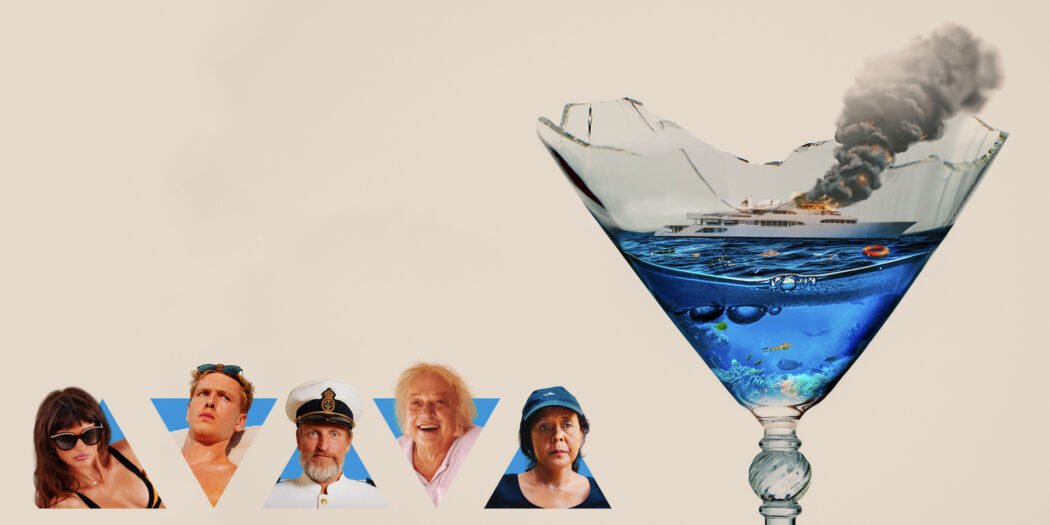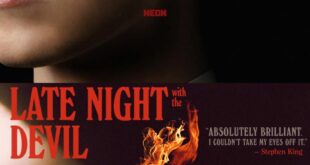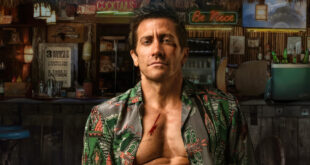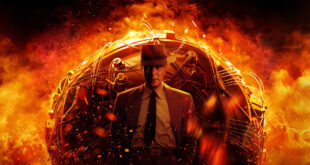Subtlety be damned in Ruben Östlund’s Triangle of Sadness, an unwieldy and, at times, thrilling skewering of Capitalism. This is a loud satire. You know immediately who the targets are and what (and who) the film is torching. Capitalism, materialism, virtue signaling, the rich, social hierarchies, gender-based power dynamics, financial inequality, Marxism, and communism are all targets explored with varying degrees of success. This movie has the ga aul to deal with the uncomfortable subject matter in a day and age where cinema seems so safe and not to mention the flood of pro Capitalist propaganda we get from Hollywood, Triangle of Sadness is a welcome reprieve despite the fact the film is not perfect. It’s having so much fun, though, that really, who gives a fuck? There’s a freshness to the force with which Östlund and the entire cast deliver the satire.
The film’s plot is not structured like many films you’re used to seeing. There’s nothing seemingly tight about the script. Everything is straightforward, and everything takes time to build up. In part 1, we follow male model Carl (Harris Dickinson) and his girlfriend Yaya (Charlbi Dean, RIP), a model and social influencer who makes more money than Carl. From the first scene, we see Carl undergoing the many humiliations male models face. Also amping up Carl’s misery is that Yaya will not pay for her meals when they eat out together. Long, hilarious pauses between Carl and Yaya dominate scenes. It’s seemingly going to be about their journey, but after they go on a cruise because of Yaya’s social influence, Triangle of Sadness morphs into an ensemble.
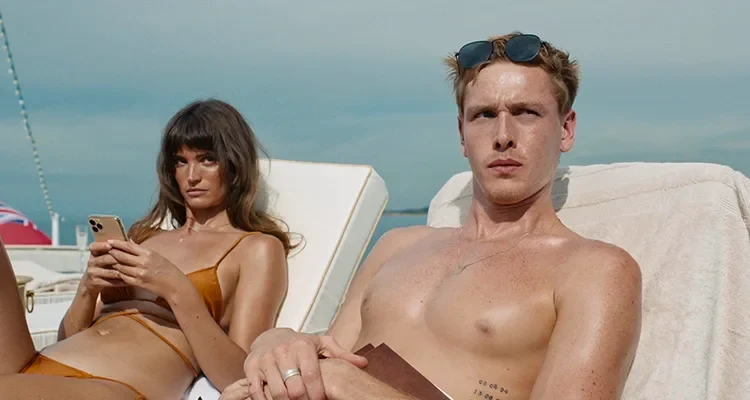
There’s a Russian fertilizer tycoon, played hilariously by Zlatko Burić, and the ship’s Marxist captain, played wonderfully by the great Woody Harrelson. The main action on the yacht concerns a captain’s dinner that goes wrong as several guests become violently seasick, vomit, or have diarrhea, perhaps due to the food, and panic breaks out. This reminded me of Östlund’s Force Majeure, where we’re waiting for the avalanche to hit. The dinner is this film’s avalanche scene. It’s a masterful piece of filmmaking, both awkwardly hilarious, uncomfortable, and shocking. It’s complete with wealthy passengers barfing, shitting, and urinating. It’s awesome. Not to mention, the sewage on the ship backs up. If you think that’s crazy, then the boat gets invaded by pirates. The film’s third part is set on an island with shipwrecked survivors.
Anyone with a job in the service or retail industry will likely resonate with you more. As movie viewers, the long, drawn-out nature of the film will test people’s patience. However, it’s worth your patience as a fan of anything slow burn. This is not a movie you put on real quick for escapist entertainment, it’ll give you some things to ponder, but it’s also gleefully entertaining and unabashedly wicked. Those who are fans of Östlund’s past work, like Force Majeure and The Square, will recognize the brand of humor. What’s nice about the film is while we’re presented with broad character types, nobody is specifically a stereotype. It would have been easy for Östlund to make every rich character a horrible person, but most are pretty nice. The working-class characters aren’t presented as flawless heroes as well. Östlund is not a Socialist, but he’s questioning a system where the economy is valued higher people’s quality of life.
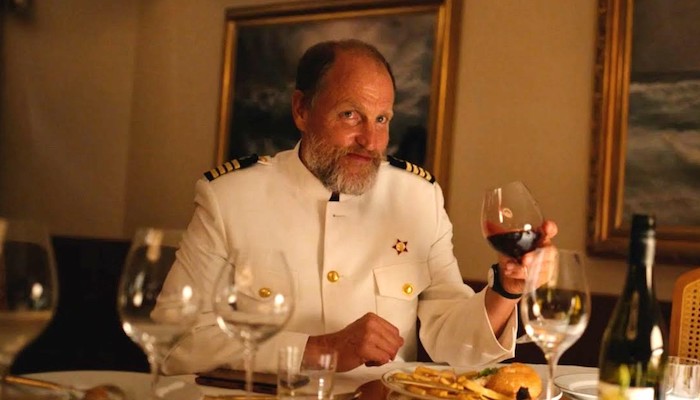
Anyone who has worked in the service industry will recognize the kind of cynical corporate lingo and propaganda at work. A significant strength of the film is that we follow characters from all classes, especially the crew on the ship who deal with the passengers and are instructed by their supervisor to do everything the customers ask of them. This leads them to chant “money money money” at the end in the hopes of getting a generous tip. The film’s most competent and skilled character, especially during the island sequence when the wealthy passengers and some crew are stranded, is Abigail, played by Dolly de Leon, who on the ship is merely a “toilet manager.” Still, on the island, she rules with an iron fist and manipulates all the more affluent passengers to do what she wants.

For some, the Triangle of Sadness might be a little dry and on the nose. It might lack the giddiness of Parasite or The Menu, but it makes fun of every political affiliation and social demographic, which is thoroughly enjoyable. If it were about 95 minutes long and a little tighter, it could have been a masterpiece, but as is Triangle of Sadness is an essential critique of Capitalism.
*Triangle of Sadness is streaming on Hulu.*
*** out of ****
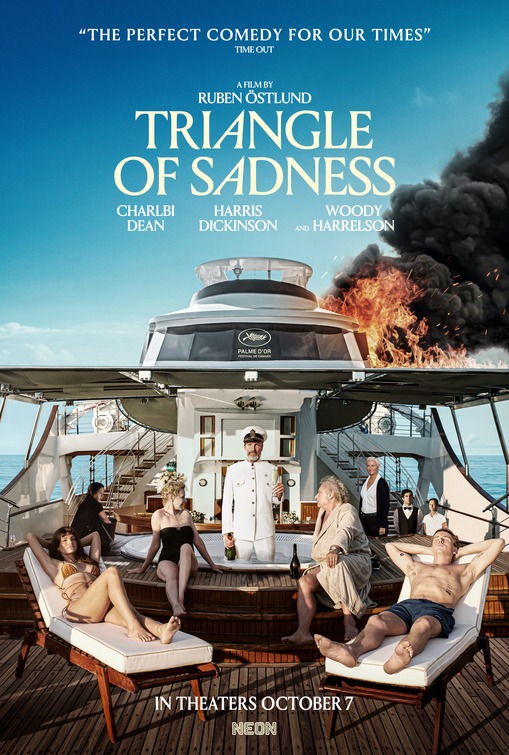
 Movie Finatics The Place for Movie Lovers
Movie Finatics The Place for Movie Lovers
